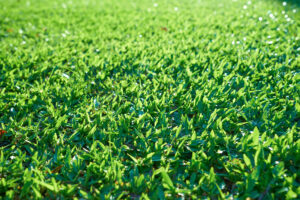Maintaining Your New Sod – What You Need To Know
Congratulations on installing a new sod in your yard! This transformation can elevate any outdoor space but maintaining it properly is crucial for keeping its health and beauty intact. Our guide will provide you with all the necessary information about caring for your newly installed sod.
Tips for Watering and Fertilizing a New Lawn
Maintaining a newly installed sod requires careful attention to watering and fertilizing practices. During the initial stages of establishment (first few weeks) daily irrigation is necessary for root development into soil. As time passes by gradually reduce frequency from everyday to once in two days after three weeks post installation; finally settling on weekly applications thereafter when lawn reaches six-week mark. When it comes down to using fertilizers wait until grass has grown at least 3 inches before applying any product – overuse can harm your turf! Follow instructions carefully while utilizing these products as per package recommendations. Remember: proper care leads to healthy growth!
Controlling Weeds in New Sod
Sod installation requires careful attention to prevent weed growth from hindering its development. Weeds compete with grass for nutrients and sunlight, which can lead to stunted growth or susceptibility towards disease. Preventing their emergence beforehand through pre emptive herbicide use is advisable; however measures may also be necessary but must not harm the sod itself during application. Proper care ensures healthy turf establishment without interference from unwanted plant intruders!
Aerating and Thatching Your New Lawn
A healthy lawn requires proper care and attention to detail. Two critical steps in maintaining a newly installed sod are aeration and thatching. Aerating involves creating small holes throughout the ground which allows air, water, and nutrients access to reach its root system while removing excess organic matter through thatching improves drainage by promoting better oxygen flow into soil spaces beneath turf surfaces. Both processes work together towards achieving optimal growth conditions for your grasses’ roots resulting in improved overall health over time!
Lawn Care Tips: When to Trim Your New Lawn
Keeping your newly installed sod looking pristine is essential for maintaining a beautiful lawn. However trimming it too soon or cutting it at an excessively low height can lead to stress on the grass and susceptibility towards diseases. Wait until after reaching approximately three inches in length before proceeding with any necessary trimmings while also ensuring that blades are sharp enough not cause damage during use. By following these guidelines you’ll have healthy greenery thriving within no time!
New Sod Installation Issues and How to Fix Them
While proper maintenance can help prevent issues with your newly installed sod, sometimes problems still arise. Common concerns include brown spots, patchiness and fungal diseases. Brown spots may result from inadequate sunlight exposure or poor drainage while improper planting techniques could lead to uneven growth patterns known as patchiness. Additionally high humidity levels might cause fungal disease outbreaks if not managed properly through adjustments like irrigation schedules or pest control measures taken promptly when necessary. If any of these issues occur don’t hesitate – take action by identifying the underlying problem then implementing appropriate remedies such as reseeding affected areas until everything looks healthy again!
Summary:
Maintaining a newly installed sod requires dedication and attention to detail. By following our guidelines you can ensure that your lawn remains healthy, green, and lush throughout the year. Its important not to neglect any issues as they may lead to further damage if left unchecked. With proper care and maintenance over time your new sod will provide years of enjoyment while enhancing the beauty of your outdoor space.



Recent Comments